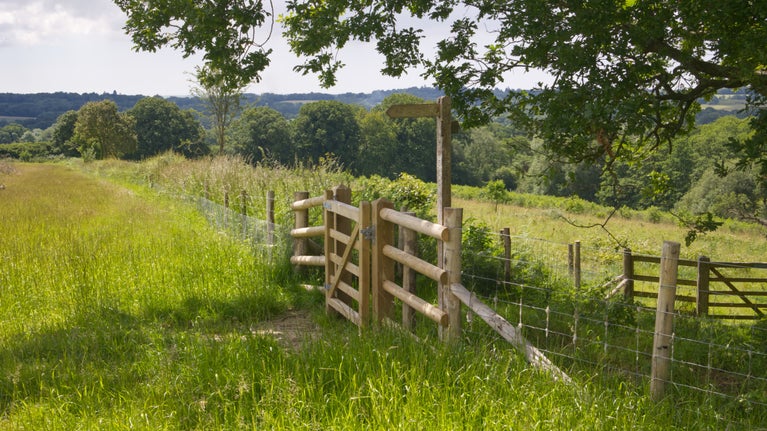Getting Ready
During 2023 a project team of experts produced a feasibility report to help us understand the impact of plans for farmland returning to management by the National Trust at Nymans.
Four potential options were considered for the project, with the preferred option having a net effect on biodiversity that would be overwhelmingly beneficial . There would be an opportunity to make a significant landscape-scale contribution to biodiversity, with a robust programme of ecological monitoring demonstrating the benefits for species, habitats, carbon, water, and soil quality.
Our Ambition
We want to restore the natural landscape to be healthier and beautiful. As part of the National Trust Land, Outdoors and Nature strategy, we want a 'Bigger, Better' and more 'Joined Up' landscape. At Nymans we want to contribute 100 ha of priority habitat to the organisational aim of 25,000ha ('Bigger'). We want to reverse the decline in internationally threatened woodland wildflower and lowland meadow species at Nymans through habitat restoration, and make sure that our water and soils are protected ('Better'). At the same time we want to make sure that connectivity across the landscape is as good as it possibly can be, through habitat creation whether through planting new trees to join woodlands together, or reinstating hedgerows that act as small mammal corridors or that aid bats to navigate the landscape (Joined Up). We will do our part for climate action and mitigate against climate change through carbon rich habitat creation.
The exciting Woodmeadow project provides an opportunity for us to deliver on all of these ambitions.
Habitat creation
We will be creating new habitats including new woodlands in-field copses, floristically diverse meadows, new hedgerows, create new orchards and ponds and enhance the existing parkland. Through this management we will maximise our 'ecotones' or areas where there is a crossover between habitats, rich in biodiversity. Livestock will play a vital role in the success of this project, with stock grazing helping to create and manage meadows and grasslands. We’re also going to be collecting and propagating woodland wildflower seed to plant alongside new tree planting
Woodmeadows
A 'woodmeadows' approach delivers high quality habitat restoration.
It takes inspiration from eastern European ‘woodmeadows’ which are the most floristically diverse habitats in Europe. This approach will deliver both ‘woods’ and ‘meadows’ using natural regeneration and hands-on techniques. To achieve this, we will combine traditional woodland and meadow restoration techniques with local horticultural expertise and managed hay-cutting and grazing to deliver a mix of plant-rich habitats across the whole estate, akin to those found historically in the High Weald.
Livestock will play a vital role in the success of this project, with stock grazing helping to champion nature friendly farming.
Priority habitat creation and increasing biodiversity is at the forefront of our vision. We will be creating a wide range of habitats from new woodlands and reinstating historic hedgerows to planting in-field copses, new orchards and excavating new ponds. These elements will in turn create an abundance of ‘ecotones’, areas of transition between habitats’ biological communities, known for being rich in biodiversity. In places, we will be working to restore habitats to be healthier through changes in management. We will restore existing hedgerows, grasslands and parkland. We’re going to be collecting and propagating woodland wildflower seeds to plant alongside some of the new trees as part of a pioneering trial.
Throughout the duration of the project, we will be surveying and monitoring the sites flora, fauna and soils to see how the land evolves over time, influencing our ongoing management techniques.












